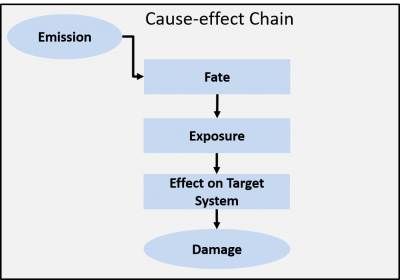Understanding the Life Cycle Impact Assessment Process: Part III – Modeling Effects and Conclusion
Life Cycle Impact Assessment (LCIA) is a central element of Life Cycle Assessment (LCA) -- the point in the LCA process where potential environmental impacts of a product or service are identified and quantified.

This is the final installment in a three-part series that reviews the three distinct phases of LCIA impact modeling (fate, exposure, and effect (Exhibit 1)), and explains how they build on one another to create a usable picture of environmental impacts for use in broader analyses.

As discussed earlier, the LCIA process mathematically models the possible outcomes of an upstream decision to mimic the natural processes the emission will go through, and the impact it will have on human health and plant and animal species.
In Part I, we reviewed the use of fate modeling to account for the characteristics of an emission and the environmental concentration it forms once released. That information let us move on to exposure modeling, discussed in Part II , which looks at the intake level of the emission by considering various routes and modes of intake. Now, having assessed exposure, we can model the effect on organisms by linking the exposure information to known toxicity data at given intake levels.
Our models link exposure factors to adverse effects at a given exposure level by an effect factor. Effect is often determined with toxicity data, using dose-response curves that represent the toxicological effects of a pollutant on a population at different doses. For human toxicity, these data could be based on ED50 (the dose at which 50% of the individuals of a population are affected), while ecosystem analyses often use HC50 (the hazardous concentration at which 50% of species are affected). Note that the ED50 data are generally based on tests in rats, mice, hamsters and nonhuman primates. The effect factor for human toxicity is measured as cases per kg intake, while the effect factor for ecosystems is measured as the fraction of species exposed to concentration above their EC50 (Potentially Affected Fraction of Species, PAF per kg/m3).
The following expressions (Equation 1) can be used for calculating effect on humans and ecosystems:

Tying Emission to Impact: Characterization Factors
We’ll close with a brief look at characterization factors that are used to convert an emission into an environmental impact. A characterization factor can be derived in the following manner: Characterization factor (Q) = fate (F) x exposure (X) x effect (E)
For the toxicity impact category, characterization includes fate, exposure and effect, although other impact categories might not use all three factors (Exhibit 2).

Smog and Particulate Matter impacts, for example, may use only fate and exposure, while Climate Change and Acidification impacts may use only fate. Please note that the characterization factors can also be defined at the damage level which is the endpoint of the cause-effect chain. The calculation of the damage factors generally involves the use of fate, exposure and effect.
We hope you’ve found this discussion of LCIA useful; if you have questions or comments, please feel free to post them below!
For full information about sources referenced in this series, please visit our LCIA Bibliography below.
For more information on impact assessment methods and models, please see the free online course on impact assessment and the free brown bag webinars offered by Earthshift Global:
Articles in This Series
Understanding Life Cycle Impact Assessment Process: Part I – Overview and Fate
Understanding Life Cycle Impact Assessment Process: Part II – Modeling Exposure: Intake and Bioavailability
Understanding Life Cycle Impact Assessment Process: Part III – Modeling Effects and Conclusion